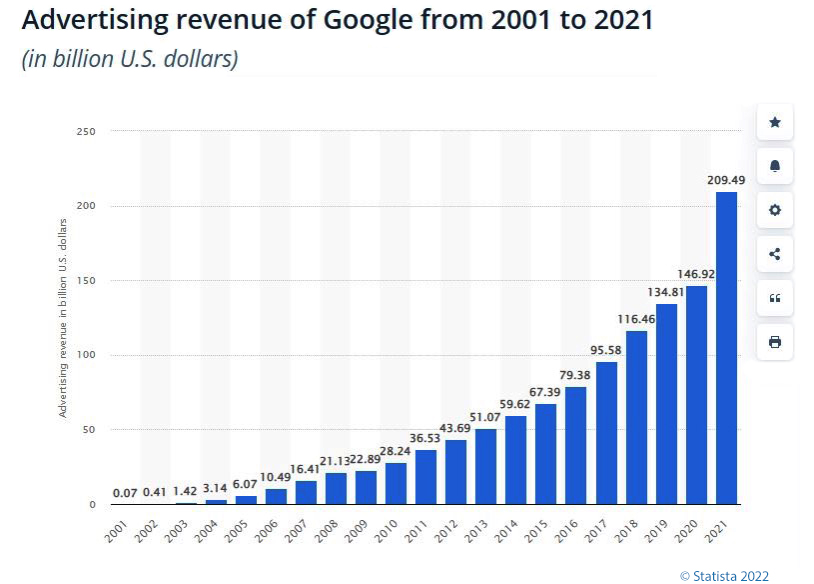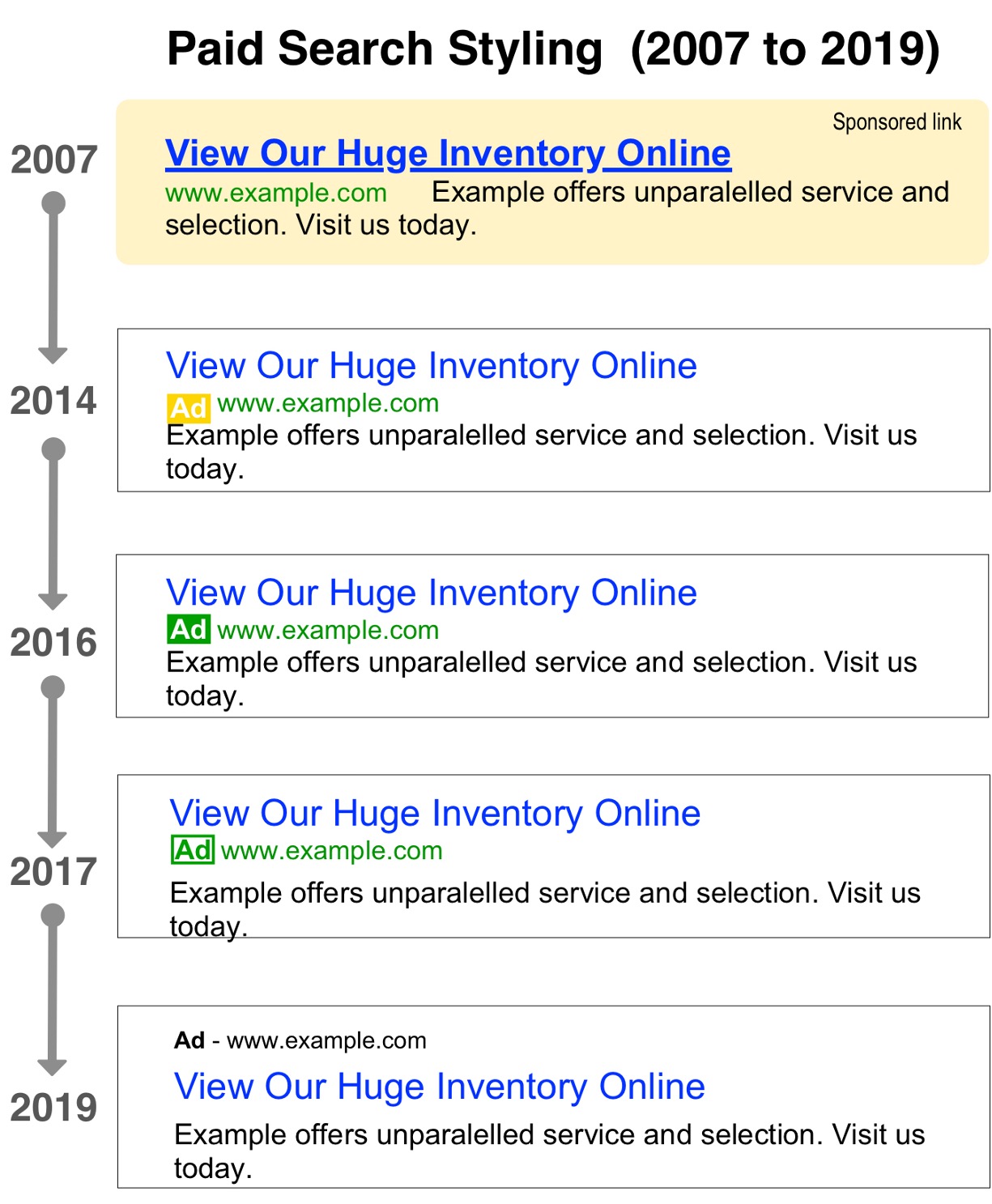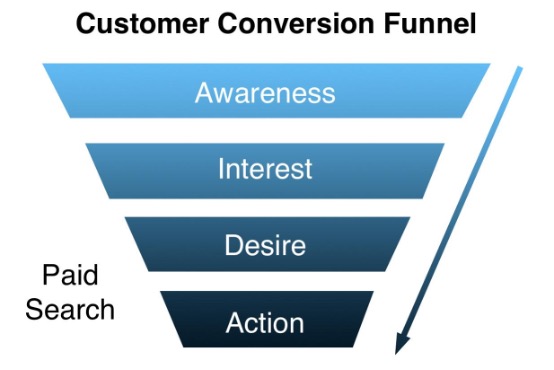

Guest Blog by Bill Hayes
Paid search engine marketing has reshaped the world of marketing.
In fact, search is now the largest component of paid marketing and its growth is unparalleled in the history of media. Ad revenues for Google have more than doubled just since 2017 to $209 billion in 2021. To contrast, Microsoft’s Bing revenue was $8.5 billion last year—less than Google did in 2006.
So, if your organization is investing some of its precious marketing dollars into paid search, essentially meaning Google, here are some important things to keep in mind.

Few winners, lots of losers
There have been plenty of winners and losers on the battlefield of the search engine results page but despite its rapid growth, paid search hasn’t moved the needle in a positive direction in terms of how well marketing is performing across the board.
So, how did we get here
It may seem like a distant memory but paid ads were once something of a novelty on Google. Before 2000, every listing on Google was an unpaid listing. In the early 2000s, when they were first introduced, paid search ads were very clearly marked as such and could be identified very easily by users.
As the years have clicked by, paid ads have been taking over the search engine results pages (SERPs) —and more importantly—they have been styled incrementally in a manner that makes them appear less like ads. In 2022, the only distinction between a paid listing and an organic listing is the word “Ad” which is written in black and in a font size that’s smaller than the listing copy.
The visual distinction between paid and organic listings has been nearly obliterated for users.

Google’s original mission was to provide its users with SERPs billed as credible and impartial representations of the web’s content. However, the SERPs have long since become a fog of results.
For example, if you perform a Google search for “online degrees Seattle” your screen will be filled with ads (often from schools not even in Seattle). Despite the appearance of unbiased search results, the SERP provides special prominence to paid ads. You will have to scroll down a bit before you get to any organic results.
The situation is great for those advertisers who can afford to place their ads up top but it’s less than great for the rest of us—especially for the user. It’s less than great for the user because now users have to apply their own mental filters to discern the paid ads from the organic listings.
If the utility of search is diminishing for the consumer, then it’s probably only a matter of time before it gets worse for the vast majority of us who are relying on search to reach the consumer.
In any case, as there can be tremendous value in getting their listings placed at (or very near) the top of the SERPs, organizations continue to pour money into paid search.
But there’s another reason why we are spending so much of our budgets on search.
The allure of the KPI
We all love metrics. Understanding our businesses in terms of data and simple metrics is absolutely essential. CEOs and CFOs demand to see performance represented in terms of key performance indicators.
This is especially true in marketing for two reasons:
- Tracking and accurately quantifying the discrete impact of individual marketing tactics is almost impossibly complex.
- There remains a persistent belief in the saying that “Half of one’s advertising dollars are a waste, but no one knows which half.”
We would all like to know which individual marketing dollars work and which ones don’t. And, after all, paid search does allow you to track costs-per-click, click-through-rates, SERP position, and so many other metrics numerically minded people love to obsess over.
In this sense, it’s understandable why marketers are allocating more of their dollars toward the tactics that are directly measurable while shifting them away from the tactics that aren’t directly measurable. The superabundance of paid search metrics has even enabled them to serve as ersatz benchmarks against which next quarter’s or next year’s marketing performance is measured.
For example:
- Did our conversion rate improve relative to the prior period? If so, let’s increase our spend there.
- Did our click-through-rates drop? If so, then let’s reduce our investment
For many, marketing has simply become the pursuit of better looking KPIs.
How have we all ended up in the business of buying positions on a search page? Largely because its mesmerizing measurability lends paid search a veneer of advantage relative to other paid media.
Our blind obsession with attribution, however, is causing many of us to lose sight of the fuller marketing picture.
Gaining a customer is more like a courtship than a swipe to the right
Converting a potential customer into an actual customer typically takes a great number of steps and usually a bit of time. The familiar “Customer Conversion Funnel” is a useful way of depicting the process because it describes the manner in which potential customers move through a series of phases as they edge ever closer to handing us their money.
The first step is awareness, followed by interest, desire, and then action. If our conversion funnel is a multi-step process, then paid search comes into play only when customers are in those final one or two steps.

Paid search doesn’t help us move potential customers into and through those first few steps, however. If all we ever did was focus on the last few steps, our funnels would dry up. Or, at the very least we would miss out on a lot of opportunities by engaging only with those who are rather far along their purchasing journey.
Focusing too heavily on paid search is akin to building an online dating profile featuring nothing but a detailed photo and description of a big diamond ring. After all, the ring is what secures the “I do.” Why not invest all our resources there and forget the rest? There are probably exceptions, but for most of us, finding our ideal partner—like finding our ideal customer—is a more circuitous journey.
What should I do?
If your organization is spending money on search, that’s probably a good thing. But do so with your eyes wide open. Overinvestment in paid search may be exposing your organization to unnecessary risk while causing it to lose sight of the full funnel approach that customer acquisition requires.
About Bill Hayes: A Seattle native, Bill has held marketing leadership roles primarily in the nonprofit and higher education sectors. In 2021, Bill published his first book, DEEP Marketing: How to Discover and Unleash Your Organization’s Hidden Strength. His current role is as founder of Iceberg Marketing Consulting where Bill uses his DEEP Marketing framework to help organizational leaders wanting to improve their marketing effectiveness.
Does your business need an agency partner? Learn how EXACTA MEDIA can help. We specialize in end-to-end media management from strategy through buy and optimization. Connect with our team of experts to learn more.
















